|
|
O R A C L E O B S E R V A T O R Y Report 18-19 August 2006 |
|
|
The weather and ClearSkyClock forecasts for 18-19 August 2006 predicted acceptable skies on the 18th with thunderstorms on the 19th. Since I hadn't been to Oracle Observatory since May I decided to go on the hopes of good skies. I took my ETX-70AT, which I had never used under really dark skies, along with my LXD75-8"SC. The plan was to do lots of Nikon D70 DSLR astrophotography during the two nights.
I left home at 0440 and arrived at 1310. The sky was mostly clear with the temperature at 88°F. There were some cirrus and cumulus clouds with a cumulonimbus way off to the North. Here's the view across the valley to the West:
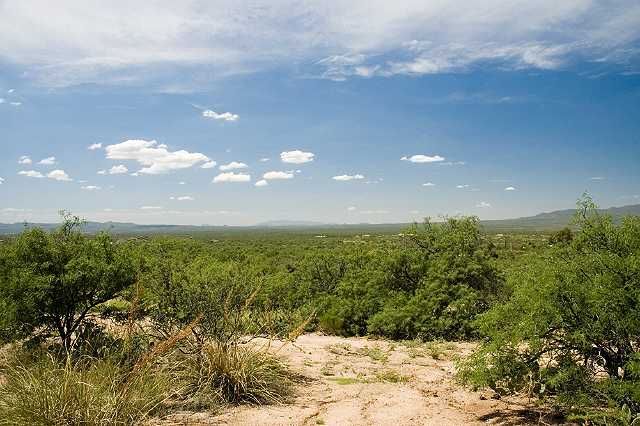
I decided to set up the tent first and hold off on setting up the telescopes until closer to sunset just to see how the clouds developed. After setting up the tent I took my usual walk around the property and took several photos.
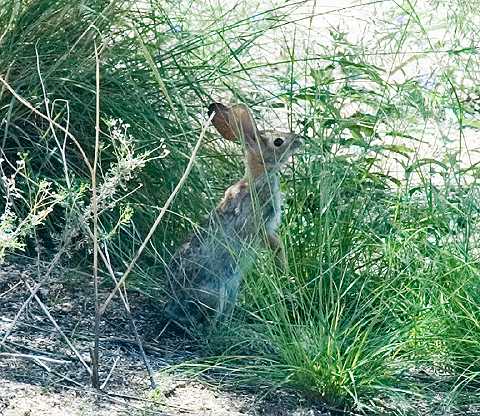

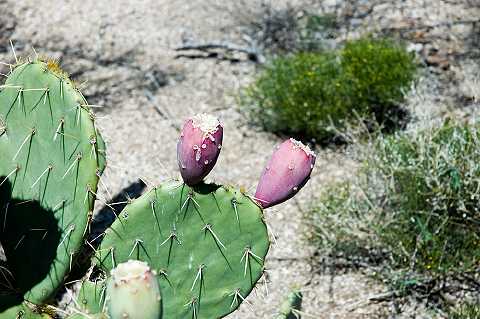
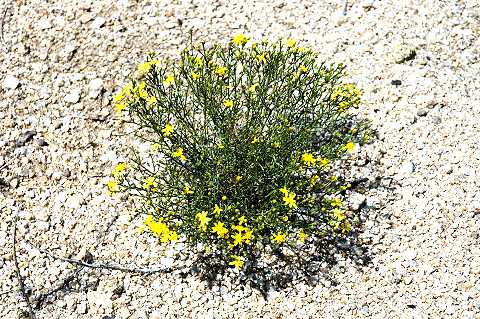
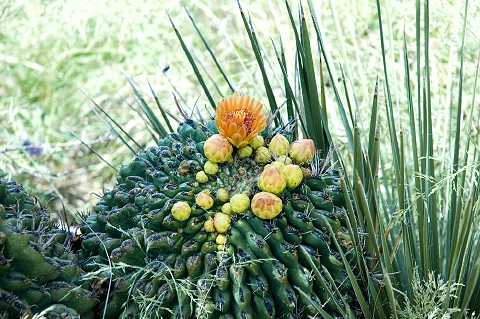
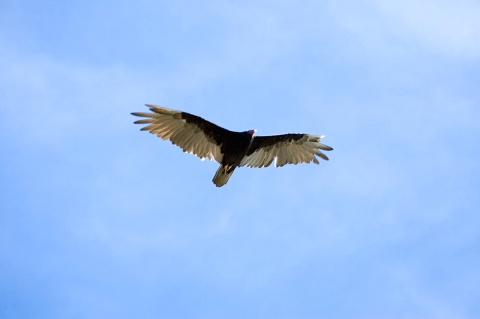
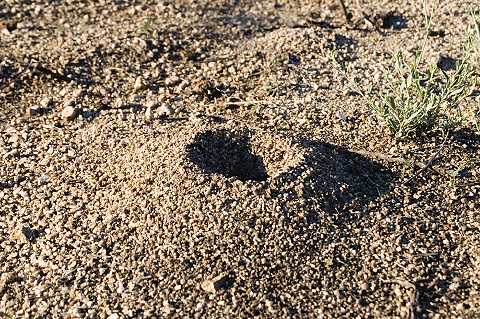
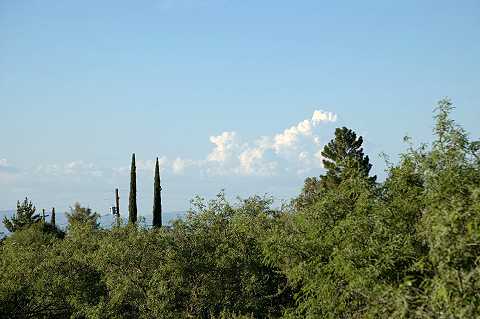
About 2 hours before sunset I began to think that the weather was going to stay good for that night so set up the rest of Oracle Observatory for my stay. Here is my typical "setup" photo. On the left is the LXD75-8"SC. Mounted "piggyback" on the 8"SC is the ETX-90 OTA (optical tube assembly) for use as a guidescope during astrophotography through the 8"SC. On the far right is the ETX-70AT, posing for its first trip to Oracle Observatory. To the left of the ETX-70AT is the PST (Personal Solar Telescope).
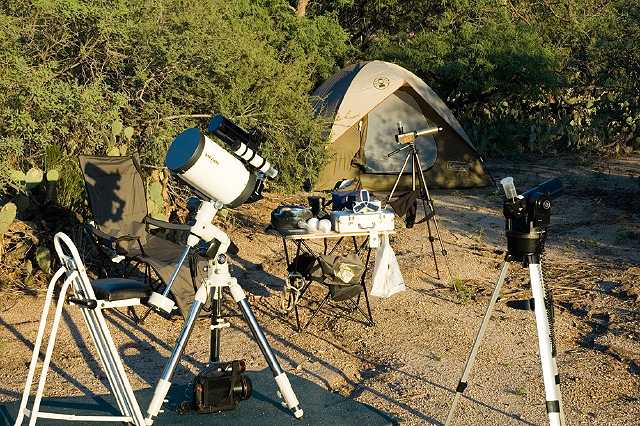
During the day I had viewed the Sun with the PST. Several solar prominences and one large sunspot were easily visible. Sunset, even without clouds, was nice as the Sun set behind distant mountains:
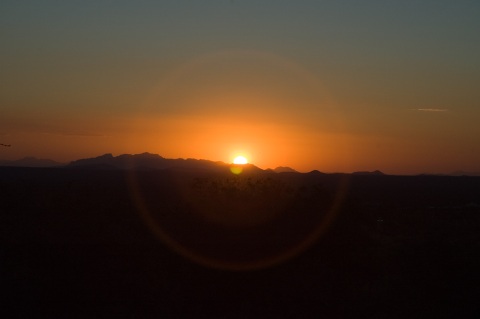
I started tonight's viewing with the ETX-70AT. As I said earlier, this was my first use of the ETX-70 from a site with really dark skies. I did all my observing with the standard Meade 25mm eyepiece (magnification = 14X). I did an Easy Align with the Autostar #494 and every object I told it to GOTO was essentially placed in the center of the eyepiece field-of-view (FOV). I did a "Tonight's Best" Guided Tour from the Autostar. M51, the Whirlpool Galaxy, was a surprisingly nice object in the ETX-70. Both portions were easily seen! All the globular clusters I viewed appeared as "fuzz balls" but nebulae like the Lagoon Nebula and the Ring Nebula showed distinct shapes and structure. The Ring Nebula was small (at 14X) and would be difficult for the first time user to locate but it was there. With averted vision, the ring was definitely visible. Open clusters were also nice, especially since the ETX-70 makes a fine wide field instrument. Alberio, the yellow and blue double star, was also a nice object. M31, the Great Galaxy in Andromeda, was a grand object, and M32, its companion galaxy, was easily visible. I had a lot of fun with the ETX-70!
The night was gorgeous but about 2110 I started seeing the sky "light up" from lightning flashes from a storm to the Southeast. I couldn't see the storm itself due to intervening hills but the flashes were bright. I had planned to do astrophotography but the continuous lighting up of the sky made that a problem. Combined with not having been under the dark skies for nearly three months, looking up and seeing the Milky Way go from horizon to horizon and directly overhead, and the fact that I only got 5.5 hours of sleep the night before my 8.5 drive to Oracle, I was rather tired, I decided to just spend the night doing visual work, enjoying what the Universe had to show me, and hope that the next night would be better (it wasn't).
I spent the rest of the night using the LXD75-8"SC. I did a One Star Easy Align and then repeated the "Tonight's Best" Guided Tour. All the objects that were West of the Meridian were placed in the center of the 26mm eyepiece (77X). Objects that were East of the Meridian were just slightly outside of the FOV; not surprising since the alignment star was West of the Meridian. I would have been better off to redo the alignment using Two or Three Star Align. But I didn't since I could easily locate the objects outside of the FOV. Spiral arms were detectable in the main galaxy of M51 using averted vision. M13, the Great Globular Cluster in Hercules, was awesome; so many stars!!! I looked at several globular clusters but M92 was really fine in the 8"SC at 77X. The Dumbbell Nebula, M27, was a lovely object, with a distinct shape and some detail visible in the nebula.
About 2300 some clouds started appearing in the Southeast, moving Northward. There were no lightning flashes visible. Then I started noticing clouds to the Northwest as well.
Since I was not "glued" to the eyepiece or camera, I was able to see several meteors, including one bright bluish-green one that had a noticeable width and had a short trail.
By 0040 the clouds were over much of the sky. Rats. I was hoping to view the waning Moon after it rose. So, just in case it stormed during the night I moved all the telescopes and other stuff inside the tent and called it a night.
I woke up Saturday morning to a clear sky. But by Noon that was changing rapidly. There were several "buildups" (cumulonimbus) to the North, East, and Southeast. It was already warmer than it had been on Friday at 94°F. I called home to check the ClearSkyClock forecast and it showed the cloud cover would be basically total starting at 1500 and staying that way for the rest of the weekend and now the weather services were calling for thunderstorms in the evening. Not surprising since it was still MONSOON season in Southern Arizona! I started packing up at 1230.
After leaving Oracle Observatory a little before 1500 I took these photographs to the East and Southeast showing the cloud cover that was approaching, as predicted by the ClearSkyClock.
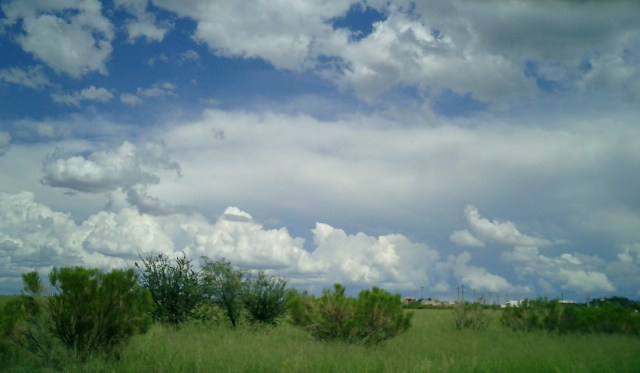
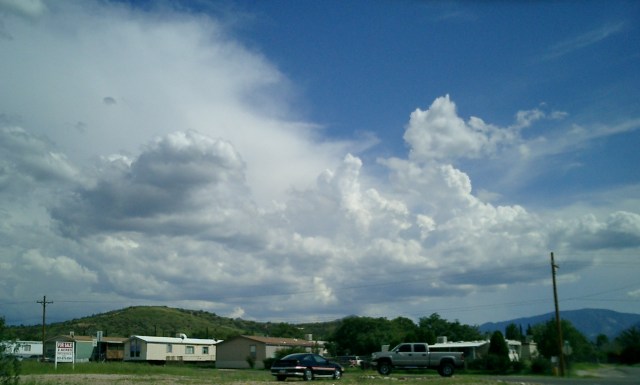
I was glad I went to Oracle Observatory this weekend and had a good time. I plan to take just the ETX-70AT on the next trip to do more work with it, including some astrophotography.
Return to the top of this page.
Return to the Oracle Observatory Main Page.